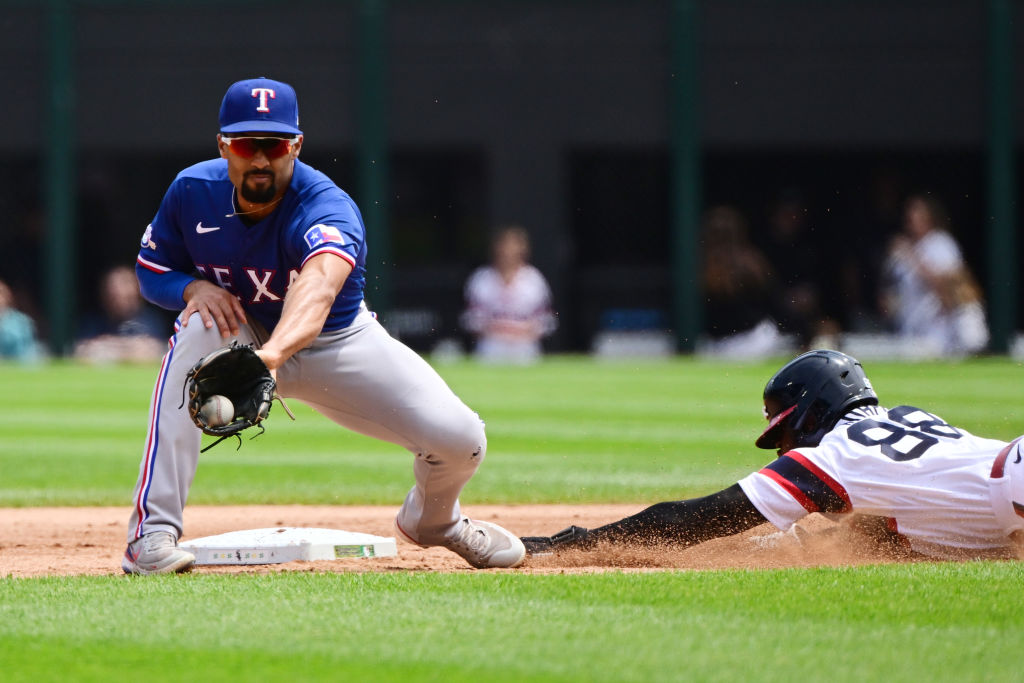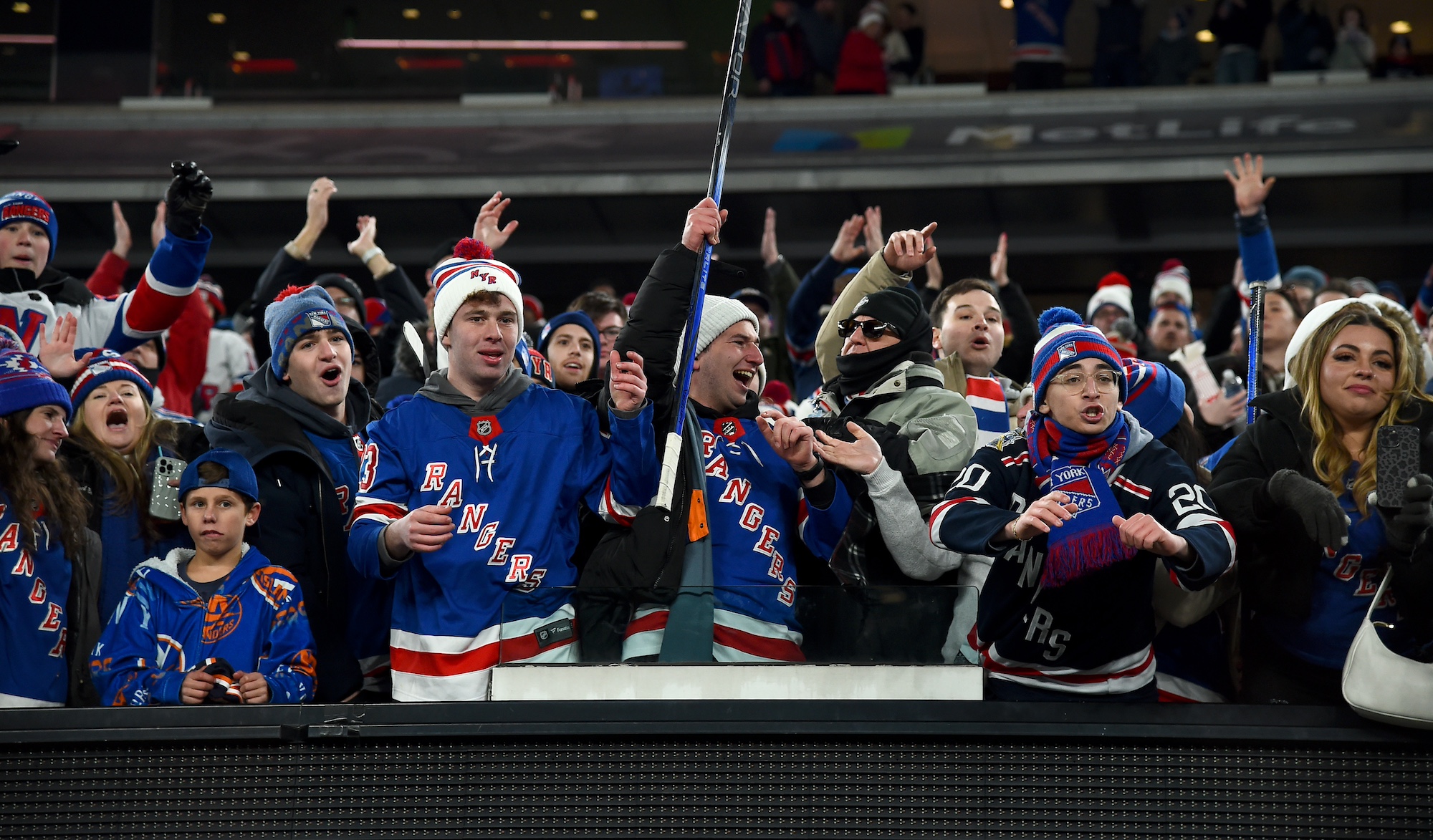We Should Make An Engine Powered By White Sox Base Stealers
10:15 AM EDT on June 16, 2022

Quinn Harris/Getty Images
In a season with plenty of questionable base-running decisions, the White Sox have only been caught stealing twice this year. Twice! This is something to celebrate. Surely this efficiency is indicative of impressive game management and play-calling, and the manager in charge of this team is facing no pushback from fans who would do something so outrageous as to chant "Fire Tony!" at a ballgame. In fact, I'm so certain of this that I will simply not interrogate any of those assumptions and will instead focus on what I do know: The White Sox are currently on pace to finish with the highest stolen-base percentage in MLB since 1947, at 94 percent.
"But sample size!" the child cries, and yes, the child is correct. The White Sox have so far stolen just 31 bases successfully, and teams from 2022 and 2020 clutter the top of the leaderboards, mostly because a 94 percent SB% isn't exactly sustainable over the course of a full 162-game season, unless the White Sox simply choose to no longer steal going forward in order to preserve this mark—not exactly brilliant game strategy, but I'm always rooting for history to be made.
The same general idea of sample size also explains, in part, why the White Sox have such a high stolen-base percentage. Efficiency is naturally going to come at the cost of stolen base attempts and total stolen bases; if you're only ever picking the most optimal times to run, you're going to lose out on opportunities. The number of total bases stolen by the White Sox isn't terribly impressive. Looking at the 2022 baserunning leaderboards, the White Sox are one stolen base below league average.
But at the same time, they're also eight caught stealings below the league average of 10. There are plenty of teams who have stolen fewer bases than the White Sox with lesser efficiencies as well, including the Boston Red Sox, who have only been caught stealing five times and did that on only 24 attempts, compared to the White Sox's 33. So maybe the White Sox really are doing something right when it comes to swiping bases. To try and figure out what that something might be, I dug into stats and ate the tape, and came away with what appear to be a few base-stealing principles that the White Sox are sticking to.
Step 1: Only let your best runners run.
And I mean, only let your best runners run. To a certain extent, this is natural—as much as we would all like to see it, you are not going to watch Albert Pujols go for 30 stolen bases in a season, ever—but the White Sox are taking this to an extreme. The White Sox have had only eight players attempt to steal so far this season. Out of this eight, five of them have only attempted one steal. All were successful. The remaining 28 stolen base attempts were split among three people: Luis Robert with 12, and Tim Anderson and Adam Engel with eight.
Compare this to the Eli White, Marcus Semien, and Adolis García-powered Texas Rangers, who have 13, 12, and 12 stolen base attempts this season respectively, a total that exceeds even the White Sox's attempts as a whole. If they were their own team, the Whemías would have a stolen-base percentage of 89 percent. But 15 total Rangers have attempted to steal this season, and the non-Whemía Rangers got only 24 stolen bases for the 10 times they were caught stealing for a mediocre efficiency of 71 percent, thus dragging the Rangers' stolen-base percentage down to 80 percent total.
This strategy is only as good as your top runners, which means that Step 1.5 is to have really good base-stealers. Engel is in the 95th percentile in Statcast's sprint speed measurement in 2022 so far, which checks out with his currently seven-for-eight base-stealing record. But Tim Anderson and Luis Robert rank 74th and 60th respectively which, while nicely above average, don't compare to Engel's. Sprint speed measures your average speed over your fastest second on runs from home-to-first on competitive singles or certain extra-base runs—basically, it measures top speed sustained over a short period of time.
But more factors go into base stealing than the all-out sprint of running home-to-first. I don't believe that there's tracking data on getting a jump from first base yet, but we can also look at the Statcast 90 ft. running splits leaderboard, and not just because it gives you an option to race little images of players against one another. The splits leaderboard looks at the amount of time it takes for players to run from 0 to 90 feet, beyond top speed. Engel ranks in the 86th percentile, Anderson in the 81st, and Robert in the 74th, all of them mostly knocked by their early splits. By getting a good lead and jump off first, you can cut out both distance and slow early acceleration. When your three best runners are at that caliber and also effectively your three only runners, you're not going to get thrown out often.
Step 2: Bully the same catchers over and over again.
The White Sox have been awfully selective about what opponents they try to run against too. They've only attempted to run on 12 different teams so far this season, and of their 33 attempts, 11 came against two teams: five against the Boston Red Sox and six against the Tampa Bay Rays. The White Sox currently have perfect base-stealing records against both.
All five of the White Sox's steals against the Red Sox came in the course of an early May three-game series. Three of them came against Christian Vásquez, who is actually an above-average fielder, both by standard CS% and by Statcast's catcher poptime, the leaderboards of which have recently been resuscitated from whatever grave they were buried in, and none too soon, either. (Poptime measures the time between the pitch hitting the catcher's mitt, and the thrown ball then hitting the mitt of whoever's covering second.) It's a little odd to target Vásquez out of all the catchers, but one game, Vásquez was facing Anderson and Leury García, who is also not-too-shabby a runner, and the next he saw, uh. Noted speedster Yasmani Grandal. There was no throw. Here's the pure, blazing speed on display:
The other two steals, however, came against Kevin Plawecki. Unlike Vásquez, Plawecki is not a good defensive catcher, by any definition. He ranks dead-last in the league in poptime and has yet to throw out a single baserunner on 12 attempts. It's a tragedy that I don't want to dwell on lest it make me sad, so we shall move on quickly.
Similar to their record against Boston, five of the White Sox's six steals against Tampa came in one series, this time in mid-April. The other took place in an early June game. Two came against Mike Zunino, and four came against Francisco Mejía. On the very surface level, the targeting of the Rays feels a little odd. Both Zunino and Mejía have below-average CS%, but nothing too extreme—compared to the league average of 23 percent, Zunino has a CS% of 20 percent and Mejía 19 percent. But catcher poptime tells a different story; both of them rank in the bottom percentiles, which again means that irrespective of results, both catchers struggle to get the ball to second base in a timely manner. If you're wondering why Zunino and Mejía are still behind the plate, Zunino is an excellent framing catcher (especially last year), and Mejía seems to be more improved this year from last. In a world where the stolen base is dying—let us take a brief period to mourn here—it's not surprising that a team, especially the Rays, might prioritize framing over a catcher's arm. And it's equally unsurprising that other teams, like the White Sox, might exploit that.
Step 3: Succeed at third?
Relentlessly attempting to steal third is probably not a good course of action, but it's fun. At least from my perspective as the common White Sox-Phillies enjoyer, as the White Sox and the Phillies have been handholding their way through various mediocrities and manager-firing crises so far this season (including, fun fact, being tied for intentional walks administered), they've also been succeeding together in SB%. Especially when stealing third. So far, the Phillies have attempted to steal third eight times and succeeded all eight times. The White Sox have attempted to steal third six times and succeeded all six times. Along with the Braves and the A's, the Phillies and White Sox are the only teams so far to have more than five stolen third-base attempts without getting caught.
It's nothing compared to the pace of the 2020 Toronto Blue Jays, who managed to steal third 10 times without getting caught before the end of the shortened season, but both teams are getting close! Steal third more often; I would like to see it.
Add up all of this—and outside factors such as luck—and you get a ludicrous stolen-base efficiency of 94 percent, a number that has, once again, never been reached by any team since integration. To put it in a broader world context, the average road car's engine runs from about 20-35 percent efficiency, and according to Formula One, the F1 power unit runs at 52 percent efficiency—pretty good, obviously, but nothing compared to White Sox base stealers' 94 percent. Solution: replace engines with White Sox baserunners and ignore those pesky laws of thermodynamics. That's physics, baby.
If you liked this blog, please share it! Your referrals help Defector reach new readers, and those new readers always get a few free blogs before encountering our paywall.
Staff Writer
Read More:
Stay in touch
Sign up for our free newsletter




